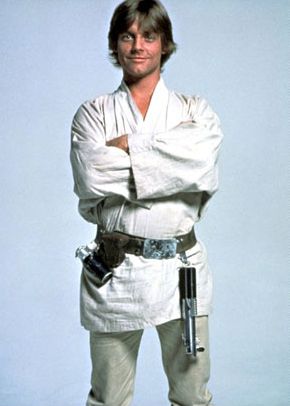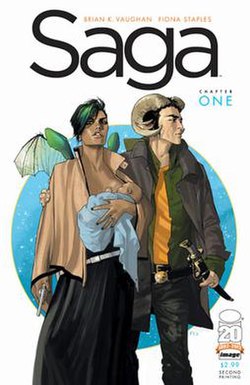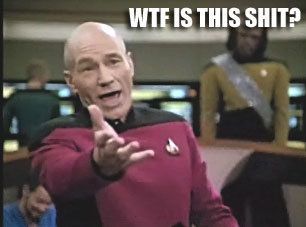
That's the Glory Boat, you pervs.
What, you thought I wouldn’t go there? I only have class inasmuch as it stands in the way of my making an obvious joke.
We’re now getting into the run of New Gods issues that Kirby feels was the strongest thing he ever did, and the energy is palpable. As you might recall, the last issue brought us face to face with the horrifying Leviathan the Deep Six (“Mystic Mutators of the Deep”) had unleashed on the world: a gigantic pink warthog-whale thing bigger than an oil tanker. You know how I can tell that? Because in the opening pages of this issue, the thing eats an oil tanker.
Well, it doesn’t “eat” it so much as it gores it with its tusks and that weird phallic ram-thing under its chin.

My favourite moment in this sequence: a sailor, spotting the leviathan, announces, “The closer it gets—the bigger it gets!!” He’s just discovered the magic of perspective! Also, the oil tanker, despite being specifically described as being made of steel, is coloured to look like an old-fashioned wooden sailing ship.
There’s now a montage of the Leviathan trashing ships all across the ocean, ending with a nice panel of a life saver marked “S. S. Aurora” floating empty in the water to segue to the main story. It seems that one of the vessels wrecked was a yacht owned by a wealthy industrialist named Farley Sheridan and his two children, who are now floating in a life raft in the middle of the sea. These three, who we’ll be getting to know better in a few pages, provide our “everyman” perspective on the following events, starting with Orion blasting out of the water a few meters away from them. Farley immediately jumps to the rather odd conclusion that “he’s some kind of new Navy frogman type!” Right, because navy officers are always dressing up in flamboyant, skintight clothing.
…Well, OK, but not while they’re on duty.
Orion, rather dickishly, chooses not to talk to the lost and frightened people on the raft, but first does a sweep of the area while caught up in his own expositional thoughts (basically recapping the last issue). Eventually, he does deign to lend a hand, shooting a tractor beam-ish thing to grab hold of the raft, or as he puts it, “A magnetic force will saturate your craft’s atomic structure!—And bind us as one!!” Kirby sure had a thing for the phrase “atomic structure”, didn’t he? Oh, atomic structures! Is there anything you can’t do?
Orion offers them rescue, but he points out that he’s on a dangerous mission, and that tagging along with him could result in their death. Here we get our introduction to the basic character dilemma of this issue: Farley, a WWII vet, claims that he’ll happily jump into the fray if it’ll get them off the raft, whereas his son Richard, a pacifist, is reluctant, and his daughter Lynn is basically a nonentity. (It’s an unfortunate feature of Kirby’s books that, in a given group, the woman will usually be the one most devoid of personality and least helpful…though there are a couple of major exceptions, like Barda.) Richard, meanwhile, is the one who starts to maybe get a teensy inkling that possibly, perhaps, the helmeted guy on the flying harness with the futuristic technology isn’t a naval officer.
After skimming across the ocean for a while (shown from above in another very nice panel), Orion finds what Mother Box has been leading him towards: a weirdly shaped wooden boat (actually, it’s more like a raft with a a temple-like cabin built on top) and a human-shaped figure bound in some kind of weird wrappings where the mast would be. Mother Box indicates that it’s alive.
“Well, there’s one way to strip those bonds away!-- Orion’s way! The way of the Astro-Force!!” Are you surprised? This is how Orion solves all his problems.
“Locked myself out of the car again! I’ll handle this Orion’s way! The way of the Astro-Force!” (Melts car with laser blast.)
“My microwave is broken! I’ll handle this Orion’s way! The way of the Astro-Force!” (Chars bagel to a smoking cinder.)
“America has become crippled by political partisanship! I’ll handle this Orion’s way! The way of the Astro-Force!” (Starts randomly shooting people.)
Anyway, the bandages—which turn out to be more of that malevolent mutated kelp Orion encountered a while back—come off, revealing none other than Lightray, who, it turns out, broke his promise to Highfather to join the war against Apokolips. Mere panels later, Orion declares that “Your kind brings an undeserved honor to war!” Well, someone’s honor’s undeserved, anyway. With Orion and Lightray now together, the pompous speechifying picks up. “Now—to see what demon’s swill the Deep Six have served up inside this craft!!” declares Orion, marching inside. Meanwhile, the Sheridan family introduces themselves to Lightray, with Farley making clear his sneering contempt for his son’s non-violent ways. “I’m a conscientious objector!” declares Richard, “I don’t like war, violence, or killing!!” “Is that right?” muses Lightray. Well, I know of a place where everybody’s like that!”
Hmmm…so conscientious objectors are like New Genesisians? That’s actually logical in a way, despite the amount of fighting they do—the idea seems to be that they only go to war when it’s absolutely necessary. Of course, that assumes that the magic wall that tells them what to do is always correct and good and just; somehow I think that a real-world conscientious objector would have a hard time falling into line with that.
Orion calls for Lightray, and they enter the hold to find a big, green, icky creature crouching in the corner, which they dub a “Sender” and an “organic director”. “There’s a mountainous sea beast out there, destroying ships!--And this—this is its brain!!” Um…wouldn’t a better place for its brain be, y’know, in its skull?
“It shouldn’t be destroyed!” reasons Lightray. “It should be changed!! Light! Light!--not to glisten on swordblades!—But light at play with atoms--to make them sing in other ways!!” Are you perhaps getting the sense that Orion and Lightray are allegorical characters?
Lightray transforms the critter into a “living basic life form!!” which apparently means a big cube of jell-o. There’s a lot of technobabble here, but basically they’re going to “imprint it with the image of New Genesis” and cause the leviathan to turn around and head back to the ship. Which it does, accompanied by another of the Deep Six, named Jaffar. Yes, Jaffar. Sadly, he does not own a wisecracking parrot voiced by Gilbert Gottfried. He does, however, have the ability to turn invisible and slip past the beams of light Lightray is sending down to the ocean floor in an effort to spot him. You’d think they’d know that about the guy and thus not waste their time, but…
Back on the boat, Richard is succeeding in pounding it into his dad that they may be just a tad over their heads here. By the way, I love how Orion was just casually going to let them go into battle, despite the fact that they’re regular humans, and thus would presumably be creamed by the forces of Apokolips. Well, he did give them a choice, I suppose. Nevertheless, having seen the “life cube” beginning to grow into a gigantic, bleeping machine, and “with Lynn to consider”, Farley is having second thoughts about staying. So, uh, Farley, you knew there was going to be a fight, and you were willing to risk your daughter, but as soon as weird mechanical cubes get involved, suddenly you’re determined to keep her from harm? You’re kind of a douche, Farley. This is driven home by the fact that, despite his admittance that his son is correct, he’s still getting shots in at him as a coward.
Unfortunately, a clean getaway isn’t in the cards, as Jaffar shows up to menace them. Richard starts calling for them to escape, but Farley is paralyzed with fear (as, I guess, is Lynn, but she’s barely in panel for this sequence). Richard suddenly finds himself galvanized into action and leaps forward into battle, threatening to fight Jaffar to the death to protect his family. But despite his newfound courage, this has about the same result you’d expect, i.e., none at all. Jaffar grabs him and uses his mutating touch to kill Richard by, basically, erasing his face. It’s a pretty damn creepy sequence.
Of course, now Orion shows up. Yeesh. If you knew the guy was going to return to the ship, why didn’t you just stay and protect them? Anyway, he blasts Jaffar off the ship with the Astro-Force, but Jaffar is already gloating that he’s impossible to kill in the water. So what does Orion do? He shoots him over and over again, keeping him in the air each time, until he’s exploded. Ouch.
Orion returns to the ship to find Farley babbling, lost in the delusion that his son has “joined his platoon—on the beach!! Yes--that’s it!!” And Lynn, as usual, just standing around crying. Jeez, why is she even in this story? Orion straps her into his harness and sends her up and away, out of the story to safety, even as her father refuses to leave.
Declaring Richard to be “another faceless hero!” Lightray sets him alongside the machinery in the cabin. Then, as the wind rises ominously and fish are seen streaming past, the remaining Deep Six—the Deep Four, I guess—launch their attack. The remaining Deeps are Shaligo, “the flying finback”, Trok, who has a whirling axe on a whip, Gole, who…has no special powers that I can see, and Pyron, who flies the manta ship with its flamethrowers. You wouldn’t think flamethrowers would be a huge benefit underwater, but they turn out to be useful when Orion repels the attack and Pyron sets fire to the boat.
Orion seeks to get away, but Lightray has apparently gone insane. First, he’s tied Farley to the mast (!). Then he draws Orion into the cabin, where Richard’s face has been restored—whatever—and their weapon has taken shape, even as the Leviathan and the manta-ship bear down on them.
From all accounts, Kirby claimed the next two pages to be the best things he ever did. On one side: the Deep Four, zipping alongside the vast pink monster as it rears out of the water. On the other, a bizarre missile formed from the techno-active cube, with Richard’s body lying pread-eagled on top, Lightray standing right at the tip, and Orion clinging onto the side, brandishing his fist at their oncoming foe.

It’s pretty awesome.
The two forces meet and explode, but of course Lightray is able to pull Orion from the point of contact at, y’know, lightspeed. We’re left with the image of Farley—who we’re hastily told was “backlashed far from the flaming area!!” left floating, adrift at sea, alone with his guilt that his supposedly cowardly son was able to fight when he couldn’t. (A tiny ship, visible on the horizon headed towards him, obviously implies that he’ll be rescued.)
As we’ve seen, of course, the Fourth World is full of this kind of tension, between the old and the young, between violence and non-violence, but here we have probably the purest expression of it. Kirby, as we all know, was a WWII vet himself, but he also seemed to have a lot of affection for the hippie types that presumably made up a chunk of his audience…and here we see the two types coming into conflict. The fact that the young pacifist seems to be proven to be in the right--though maybe not in a way that a real pacifist would agree with—is interesting; the point seems to be that, when the chips are down, Fairley, the war vet, is frozen in panic, whereas the pacifist leaps into the fight heroically.
This is a bit confusing. If we're meant to find irony in the fact that the two men act differently from how they behave, that's problematic because it sort of implies negative things about pacifism. That clearly wasn't Kirby's intent, and indeed, Richard is clearly the more likeable character both before AND after the battle begins and his true colours are shown, to the point where it seems like Kirby's almost pandering a little. But then, the point is apparently to praise people who "speak softly and carry a big stick". In fact, there's a fairly subtle and crucial point here being made about pacifism: it's not about cowardice or suicidal nonviolence, it's about keeping violence at a distance unless absolutely necessary, and not using it as a rhetorical club.
One thing's for sure, it's interesting that Kirby is so willing to write off the WWII vet while showing the representative of the younger generation in a more positive light. This is a theme the Fourth World comes back to again and again, a reverent awe for the flower power generation, which carries a lot more weight coming from someone who wasn't actually part of that generation. It's perhaps not hard to see how the Baby Boomers ended up with such high opinions of themselves.















